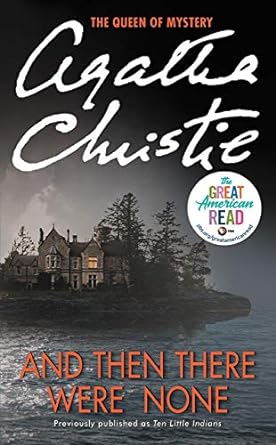I’ve always been fascinated by puzzles. Murder mysteries are a unique kind of puzzle, guiding you through an entire scenario through specific points of view to only show you exactly what the author wants you to know. The smallest of details can be crucial information, and information that seemed critical could turn out to be an outright lie. It makes your head spin, and when you finally learn the truth all of the little puzzle pieces click together in your brain in the most satisfying way. Despite my love for a good mystery, I have never read an Agatha Christie book- until now. And what better place to start than with the World’s Favorite Christie, And Then There Were None?
“The whole thing is utterly impossible and utterly fascinating. It is the most baffling mystery Agatha Christie has ever written.” – New York Times
The majority of the book takes place on Soldier Island, an isolated small island off of the Devon coast. Ten strangers are invited by U.N. Owen to stay at their manor, all for various reasons. Once all the guests have arrived and see that their gracious host is nowhere to be seen, the mystery begins. A phonograph is played and a voice fills the room, charging each and every guest with murder and declaring them prisoners. By the end of the night the first death happens in front of them all, and they must face the fact that somebody has summoned them here in order to kill them.
The book jumps between the perspectives of different guests, giving us insight into how they are handling the events and who each of them may suspect is the murderer. After all, it could very well be one of them. Not to mention the ominous poem in each of their rooms, counting down the deaths of ten soldiers in a rather ominous nursery rhyme with gruesome deaths that just so happen to match up with the increasing number of deaths on the island.
It’s a dizzying story that had me turning pages both forward and back, re-reading passages to try and discover the mystery for myself. Writing an engaging mystery with twists and turns, while keeping it plausible is quite the task, and Christie herself described crafting the mystery as “so difficult to do.” The epilogue wraps everything up in a neat little bow that I’m still thinking about days after finishing the book.
Agatha Christie is responsible for many of the mystery clichés and tropes that we know and love today. It seems her title of “The Queen of Mystery” is well earned, and I look forward to digging further into her sizable collection of mystery novels.
Christie, Agatha. And Then There Were None. William Morrow Paperbacks. 2011


